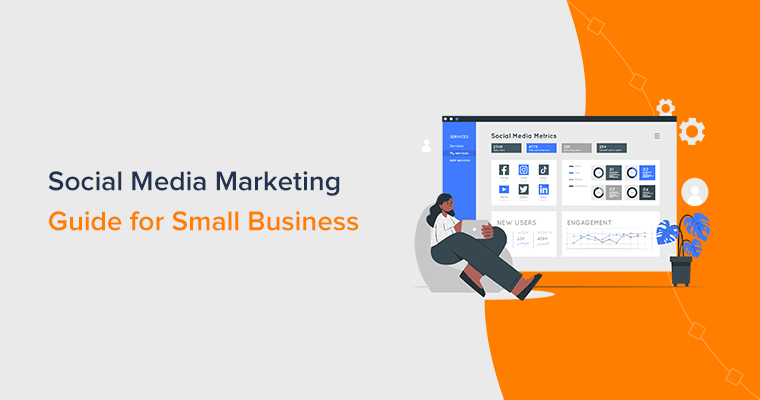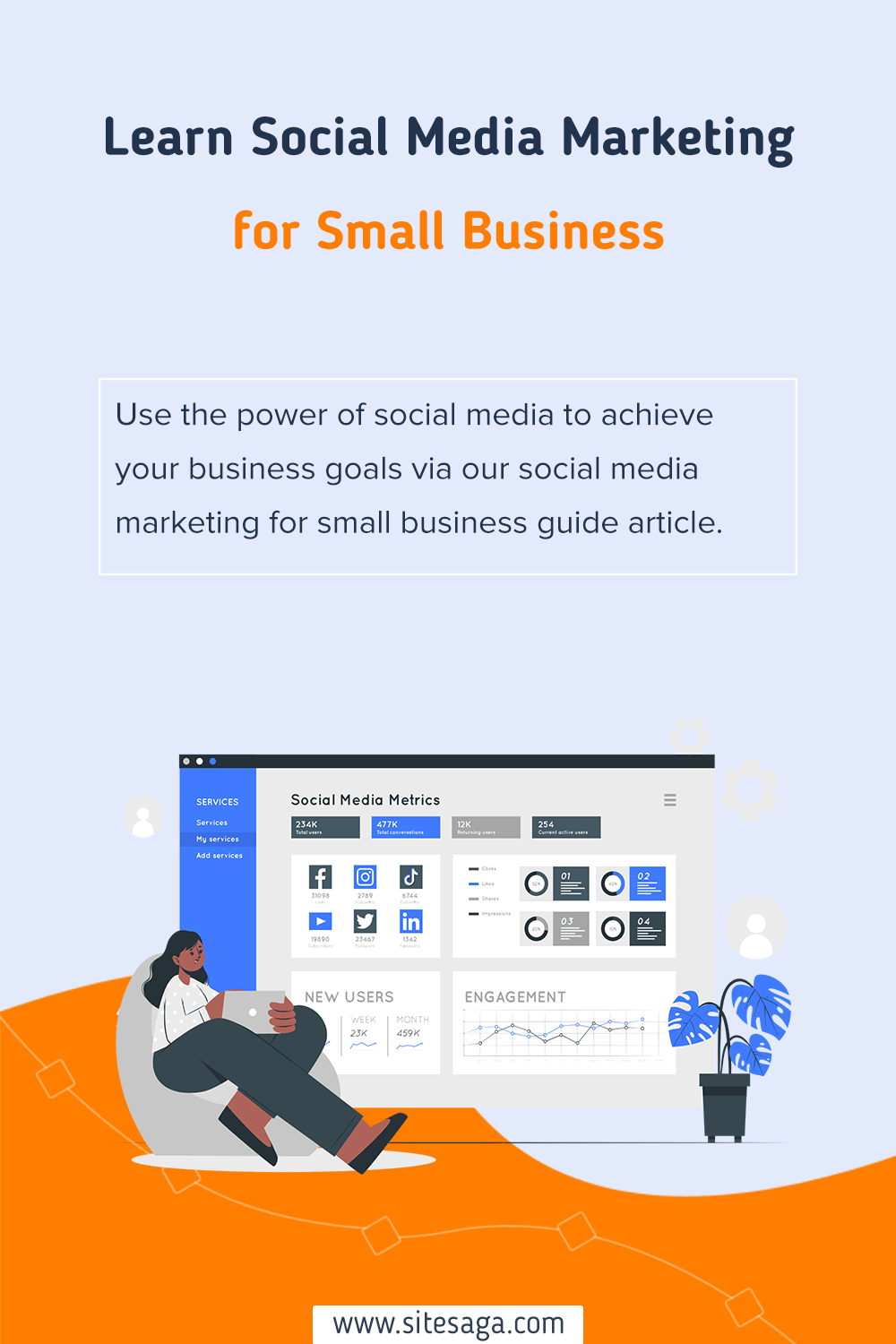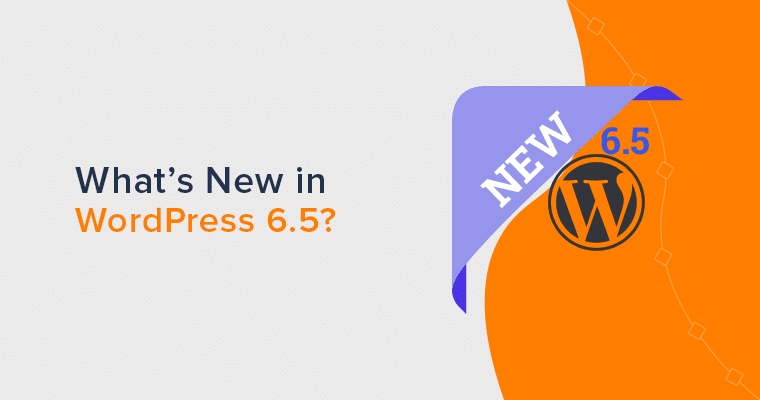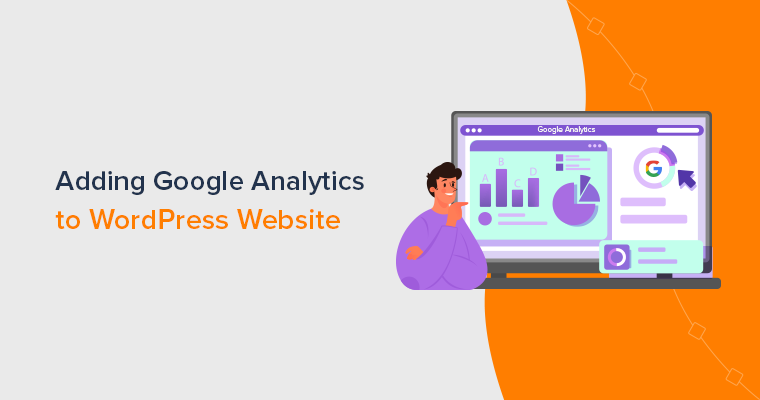Do you want to do social media marketing for your small business? If yes, then you’re lucky to be in the right place!
In today’s digital age, social media has become an essential tool for small businesses. With countless users engaging on different platforms, it presents unparalleled opportunities.
So, you can expand your reach, engage with your audience, and drive growth.
However, navigating the world of social media marketing can be daunting, especially for small businesses with limited resources and expertise. But, don’t worry anymore!
In this article, we’ll explore all the ins and outs of social media marketing for small businesses. So, you can use the power of social media to achieve your business goals.
Now, let’s dig in!
A) What is Social Media Marketing?
Before we start, let’s understand what social media marketing actually is.
Social media marketing is the strategic use of social media platforms to promote products, services, or brands and engage with a target audience.
It involves creating and sharing content tailored to the platform and audience, to drive user engagement, brand awareness, and ultimately, business growth.

In other words, it involves businesses using sites like Facebook, Instagram, Twitter, LinkedIn, etc to share information about their products or services.
It’s like businesses talking to friends online but with a goal – to share interesting things about what they offer and attract people’s attention.
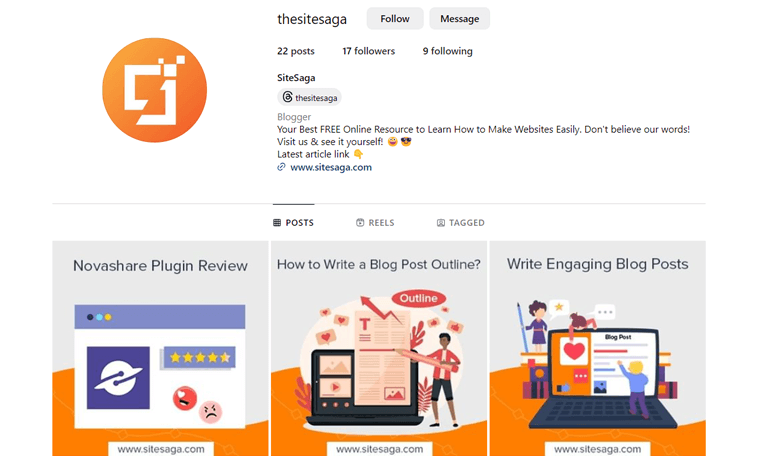
Whereby, businesses post pictures, videos, and messages on social media to make people curious about what they have. They also talk directly with customers, answer their questions, and listen to their feedback about what they offer.
By doing this, businesses can build a good reputation online and make more people interested in what they sell. It’s all about being friendly, sharing exciting stuff, and connecting with customers.
B) Why Is It Important for Small Businesses?
Now that you know what social media marketing is, why does social media matter for small businesses?
Well, it helps you talk to more people, show off your stuff, and understand what customers like. Moreover, it’s important because:
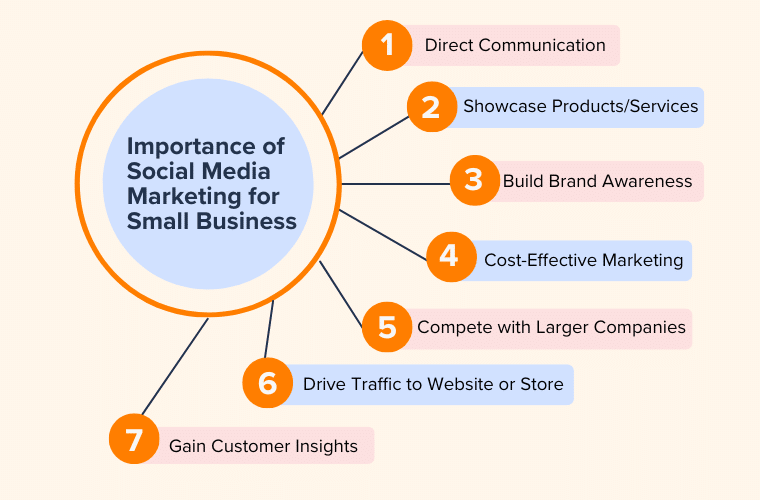
- Direct Communication: It provides a direct line of communication with potential customers, allowing you to engage with them in real time.
- Showcase Products/Services: You can use social media to showcase your products or services through images, videos, and posts.
- Build Brand Awareness: Regularly posting on social media helps you to increase brand recognition and establish a presence in the industry.
- Cost-Effective Marketing: Social media platforms often offer free or low-cost marketing options, making it accessible with limited budgets.
- Compete with Larger Companies: Levels the playing field, allowing you to compete with larger competitors by reaching the same audience.
- Drive Traffic to Website or Store: Via social media, you can drive traffic to a business’s website or physical store, ultimately leading to more sales.
- Gain Customer Insights: By monitoring social media activity, you can gain valuable insights into customer preferences, behaviors, and trends.
No doubt, social media is like a superpower for small businesses – it helps you grow bigger and better! So, if you have a small business, then don’t forget to use social media to make it even more awesome.
Having said that, let’s jump into learning how to do social media marketing for small businesses.
C) How to Do Social Media Marketing for Small Business?
Crafting a social media marketing strategy means planning how you’ll use platforms like Facebook, Instagram, Twitter, etc to achieve your business goals. It’s like making a roadmap for your brand’s online journey.
In this guide, we’ll break down the steps to create a solid strategy for your small business. Follow along, and we’ll show you how to boost your business using social media, one step at a time.
Step 1: Understanding Your Audience
The first step of social media marketing is to understand your audience. This implies knowing who your ideal customers are, what they want, and how they behave on social media. So, you can create and share content that resonates with them, and achieve your marketing goals.
To understand your audience, you can use various methods, such as:
i) Creating Buyer Personas
Buyer personas are fictional representations of your ideal customers, based on their demographics, interests, pain points, goals, and motivations.

You can create buyer personas by researching your existing customers, using analytics tools, or conducting interviews or surveys.
ii) Using Analytics Tools
Analytics tools can help you track and measure your audience’s behavior on social media, such as their engagement, reach, impressions, clicks, conversions, and more.
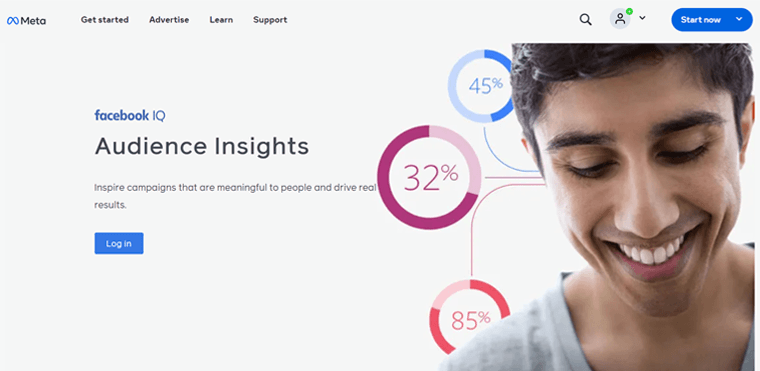
You can use analytics tools provided by the social media platforms themselves, such as Facebook Insights, Twitter Analytics, or third-party tools.
iii) Conducting Surveys
Surveys can help you collect feedback from your audience directly, and learn more about their preferences, opinions, needs, and challenges.

You can use online survey plugins and tools, such as SurveyMaker, Typeform, or create polls or quizzes on social media platforms.
iv) Monitoring Social Conversations
Social conversations are the comments, mentions, reviews, hashtags, or messages that your audience posts on social media. Particularly about your brand, industry, or competitors.
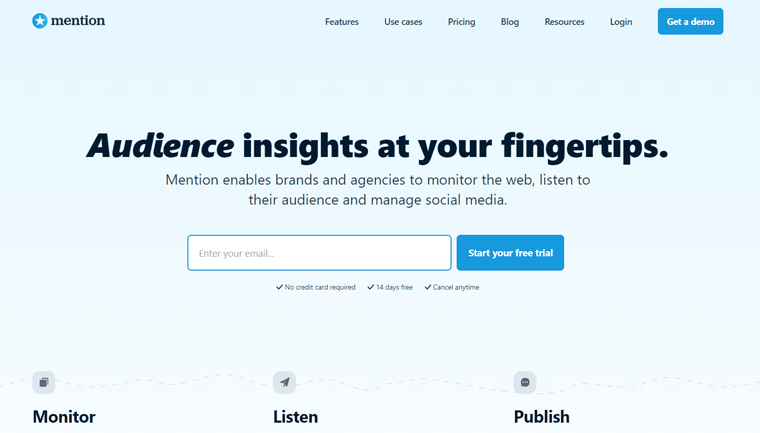
You can use social listening tools, such as Mention or Brandwatch, or manually search for relevant keywords on social media platforms. Monitoring social conversations can help you understand your audience’s sentiments, questions, complaints, or praises.
v) Learning From Your Competitors
Your competitors are the other businesses that offer similar products or services to your target market. Learning from your competitors can help you understand what works and what doesn’t work for your audience on social media.
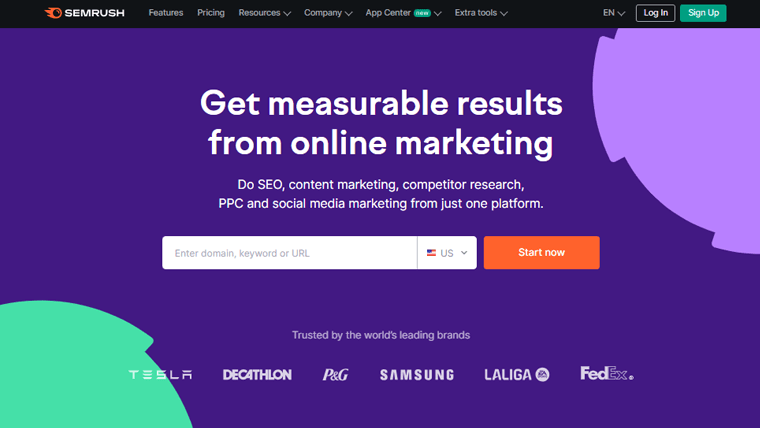
You can use competitor analysis tools, such as Semrush, and BuzzSumo, or follow your competitors’ social media accounts. And observe their content, engagement, and feedback.
By understanding your audience better, you can create a more effective social media marketing strategy that meets their needs and expectations. With that done, let’s move on to the next step.
Step 2: Set Your Budget
The second step of social media marketing is to set your budget. Your budget is the amount of money you are willing and able to spend on your social media marketing activities. Such as content creation, tools, ads, or partnerships.

To set your budget, you can follow the below guidelines:
- Define Goals: Clearly outline specific and measurable outcomes you aim to achieve with your social media marketing. Such as increasing followers, traffic, leads, or sales. These goals will determine your budget allocation.
- Identify Audience: Determine the demographics, interests, and preferences of your ideal customers. So, you can select the most effective social media platforms and strategies for reaching them.
- Find Tools: Research and compare tools that aid in planning, creating, managing, and measuring social media efforts. Consider tools for scheduling, analytics, etc that align with your needs and budget.
- Boost Social Media: Allocate funds strategically for ads, sponsored posts, or influencer marketing to enhance reach and engagement.
- Analyze: Track and measure the performance and ROI (Return on Investment) of your social media marketing using analytics tools or reports. And adjust your budget accordingly for better results.
By setting your budget wisely, you can optimize your social media marketing and get the most value out of it.
Having said that, let’s jump into the next step.
Step 3: Choosing the Right Social Media Platforms
The third step of social media marketing is to choose the right social media platforms for your business.
Social media platforms are online places where you can connect and communicate with your audience, share your content, and promote your brand.

To choose the right social media platforms for your business, you can follow the below guides:
i) Go Where Your Audience Is
You need to find out which platforms your target audience uses the most, and where they are most likely to engage with your content. You can use analytics tools, surveys, or social listening to discover where your audience hangs out online.
ii) Consider the Nature of Your Business
Next, you need to consider whether your business is B2B (Business-to-Business) or B2C (Business-to-Consumer). And what kind of products or services you offer.
Different platforms have different strengths and purposes, and some may be more suitable for your business than others.
For example, LinkedIn is a great platform for B2B businesses, while Instagram is a great platform for visual and creative businesses.
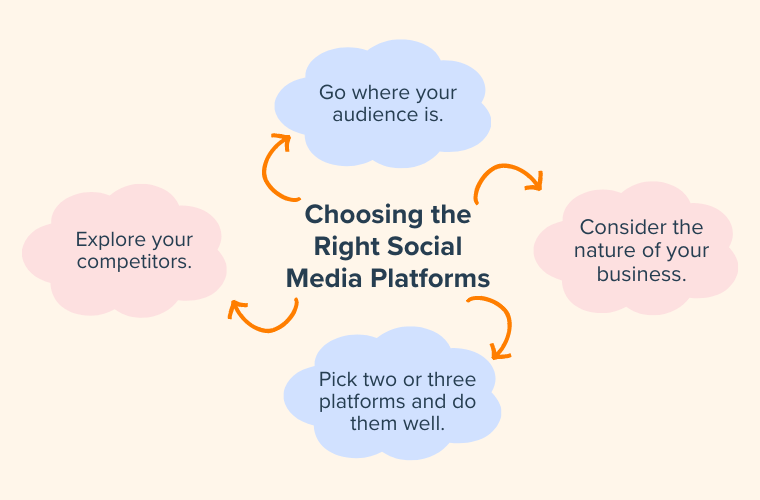
iii) Pick Two or Three Platforms and Do Them Well
You don’t need to be on every social media platform available. It’s better to focus on two or three platforms that match your goals and audience, and do them well.
This will help you save time, money, and resources, and avoid spreading yourself too thin.
iv) Explore Your Competitors
Again, you can also learn from your competitors and see which platforms they are using, and how they are performing on them.
You can use competitor analysis tools or follow their accounts. To see the kind of content and how often they post, how much engagement they get, and what feedback they receive. This can help you identify the best practices and gaps in your industry.
By choosing the right social media platforms for your business, you can maximize your reach and impact on social media.
Step 4: Defining Your Brand Voice & Creating Engaging Content
The fourth step of social media marketing is to define your brand voice and create engaging content.
Your brand voice represents the personality and tone that you use to connect with your audience on social media. Meanwhile, your content is the material that you create and share to attract, inform, and entertain your audience.
Here’s how you can define your brand voice and create engaging content:
i) Define Your Brand Voice
Your brand voice should reflect your brand’s values, mission, and goals, as well as your audience’s preferences, needs, and expectations. You can use a brand voice chart to define your brand voice by knowing how you want to sound to your audience.

ii) Create Engaging Content
Your content should be relevant, valuable, and interesting for your audience, and aligned with your brand voice and goals. You can use the following types of content to engage your audience on social media:
- Text: Utilize clear, concise, and conversational language in captions, headlines, tweets, etc. Avoid jargon, slang, or grammar errors.
- Images: Use high-quality, original, and relevant images with captions, logos, or filters to create engaging graphics, infographics, memes, or photos.
- Videos: Craft short, catchy, and informative videos with subtitles, music, or effects. To demonstrate products, showcase your brand, or educate your audience through tutorials, testimonials, live streams, or stories.
- Stories: Share behind-the-scenes, updates, or tips with your audience through short, and vertical videos or images known as stories. Further, you can enhance them with polls, quizzes, etc for added engagement.
By defining your brand voice and creating engaging content, you can connect and communicate with your audience on social media.
You might be interested in exploring our article on the best AI rewriter tools for easy content transformation.
Step 5: Managing and Optimizing Your Social Media Posts
The fifth step of social media marketing is to manage and optimize your social media posts.
Managing and optimizing your social media posts means planning, scheduling, and improving your content to increase your reach and engagement on social media platforms.
Here’s how you can manage and optimize your social media posts:
i) Plan Your Content Ahead of Time
Planning your content ahead of time can help you create a consistent and coherent social media strategy.
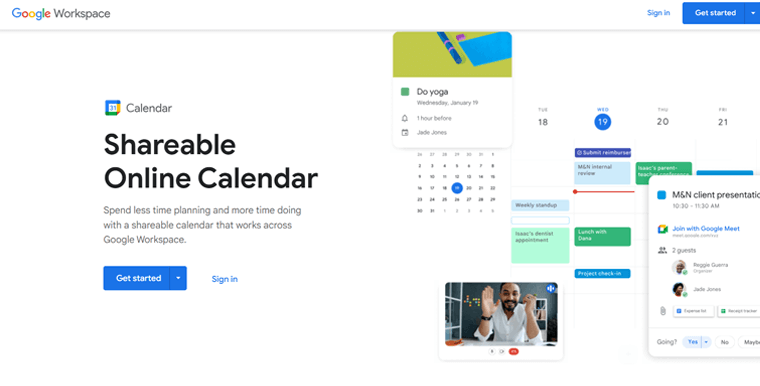
You can use a content calendar to plan your content, such as Google Calendar, or Hootsuite, or Trello. As a result, this helps you align your content with your goals and audience and avoids missing important dates or events.
ii) Schedule Your Posts in Advance
Scheduling your posts in advance can help you save time, and avoid stress. Most importantly, it helps you ensure that your content is published at the optimal times and frequencies for your audience and platforms.
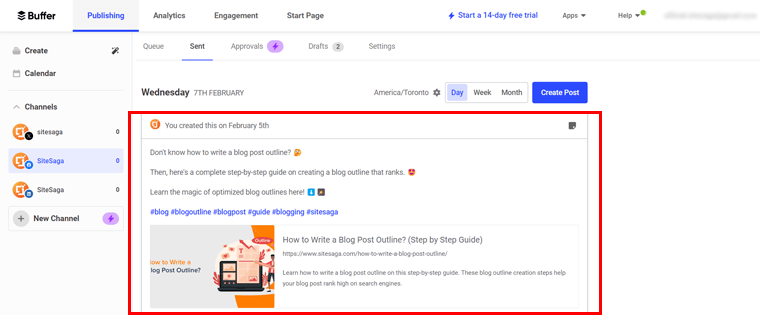
You can use scheduling tools to schedule your posts, such as Buffer, Sprout Social, or Later for scheduling your social media content.
iii) Optimize Your Posts for Each Platform
Optimizing your posts for each platform can help you maximize your performance and results on different social media networks.
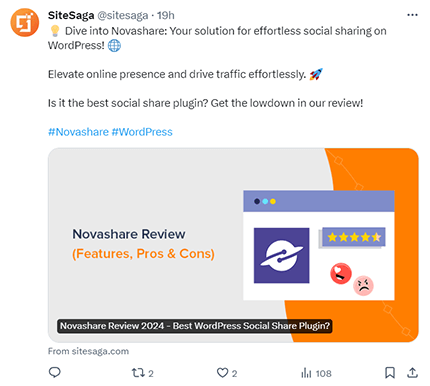
You can optimize your posts by using the best practices and guidelines for each platform. Such as the optimal post length, format, style, tone, hashtags, keywords, captions, tags, mentions, etc.
Step 6: Leveraging Influencers & Partnerships
Likewise, our 6th step in social media marketing is to leverage influencers and partnerships.
Influencers and partners are the people or organizations that have a large and loyal following on social media. And can help you reach and influence your target audience.

Here’s how you can leverage influencers and partnerships:
The first thing is, you need to identify the right influencers and partners for your brand. Meaning, you need to find the influencers and partners that match your brand’s personality, purpose, and goals, and have a relevant and engaged audience.
Next, you need to set a clear and mutually beneficial relationship. Try to communicate your expectations and objectives clearly with your influencers and partners.
And offer them fair and attractive compensation, such as money, products, services, or exposure. You also need to respect their creative freedom and authenticity and avoid being too controlling.
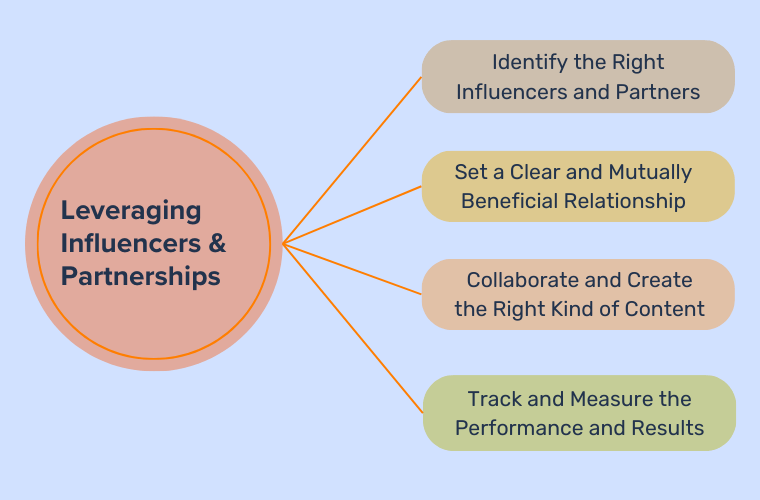
With that, you can collaborate with influencers and partners to create the right kind of content that provides value and interest to your audience. And also showcases your brand’s benefits and features.
For example, you can use different types of content strategies, such as reviews, giveaways, testimonials, tutorials, live streams, etc.
Once done, you need to track and measure the performance and results of your influencer and partner campaigns. Such as reach, engagement, traffic, leads, or sales.
This way, you can leverage influencers and partnerships to amplify your social media marketing and achieve your goals.
Step 7: Tracking and Measuring Your Social Media Marketing Results
One of the most important aspects of social media marketing for small businesses is tracking and measuring your results.
Without knowing how your efforts are performing, you won’t be able to optimize them and achieve your goals.
Fortunately, many tools and metrics can help you monitor your social media marketing performance. Some of the most common ones are:
i) Engagement
This metric measures how much your audience interacts with your content, such as likes, comments, shares, clicks, and views.

Engagement can help you understand how relevant and appealing your content is to your audience, and what types of posts generate the most response.
ii) Reach
This metric measures how many people see your content, either organically or through paid ads. Reach can help you understand how well your content is distributed and how much exposure your brand is getting on social media.
Also, the impression metric measures how many times your content is displayed, regardless of whether it is clicked or not. Impressions can help you understand how frequently your content is shown and how much potential it has to reach your audience.
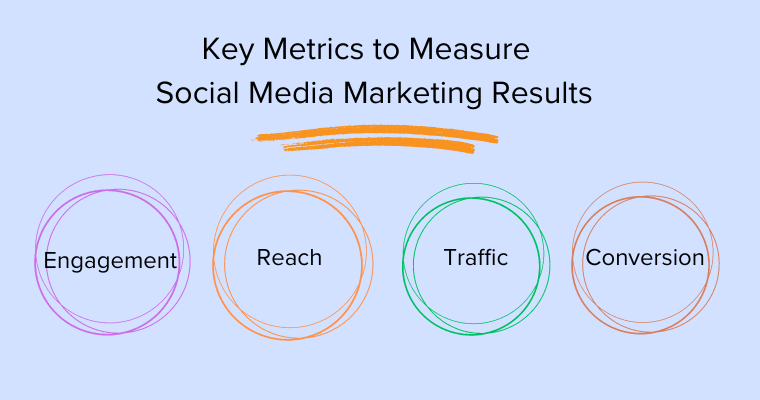
iii) Traffic
This metric measures how many people visit your website or landing page from your social media posts or ads.
Traffic can help you understand how effective your social media marketing is at driving visitors to your website. So, you can convert them into leads or customers.
iv) Conversion
This metric measures how many people take a desired action on your website or landing page. Such as signing up for a newsletter, downloading an ebook, or making a purchase.

Conversions can help you understand how successful your social media marketing is at generating leads or sales for your business.
To measure conversion, you can set specific and measurable goals for each metric. Such as increasing your engagement rate by 10% or generating 50 new leads per month from social media.
By comparing your actual results with your goals, you can evaluate your social media marketing performance and identify areas for improvement.
To track and measure these metrics, you can use various tools. Such as the native analytics features of each social media platform, Google Analytics, or third-party social media management tools.
You might be interested in exploring our article on how businesses can benefit from using analytics on their website.
Step 8: Adjusting Your Strategy
Last but not least, our final step in social media marketing for small businesses involves adjusting your strategy.
Since social media marketing is not a one-time thing. It requires constant testing, learning, and adjusting to keep up with the changing trends and preferences of your audience.
Therefore, you should regularly review your social media marketing results and use the insights to adjust your strategy accordingly.
Here’s how you can do that:
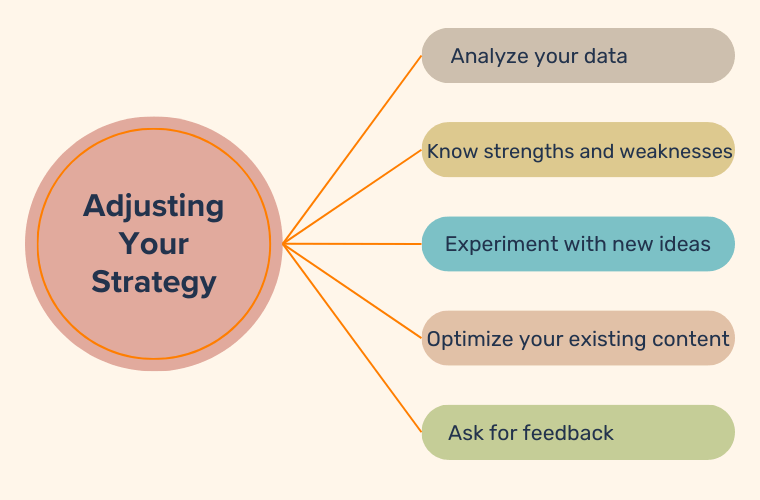
i) Analyze Your Data
Look at your metrics and see what worked and what didn’t. For instance, you can find:
- Which posts or ads generated the most engagement, reach, impressions, traffic, or conversions?
- Which ones performed poorly or failed to meet your goals? What can you learn from these results?
ii) Identify Your Strengths and Weaknesses
Now, based on your data analysis, determine what are your strengths and weaknesses in your social media marketing.
- What are you doing well and what are you struggling with?
- What are the opportunities and threats for your business on social media?
iii) Experiment With New Ideas
Don’t be afraid to try new things and test different approaches on social media. You can experiment with different types of content, formats, styles, tones, frequencies, timings, hashtags, keywords, audiences, or platforms.
And, see what resonates with your audience and what drives the best results for your business.
iv) Optimize Your Existing Content
You don’t have to create new content from scratch every time. You can also optimize your existing content by updating, repurposing, or resharing it.
For example:
- You can update your old blog posts with new information, and repurpose your ebooks into infographics.
- Or reshare your popular posts with new captions or hashtags.
v) Ask For Feedback
One of the best ways to improve your social media marketing is to ask for feedback from your audience.
- You can use polls, surveys, quizzes, or questions to get their opinions, preferences, suggestions, or testimonials.
- Also, you can monitor your users’ comments, reviews, or messages to see what they are saying about your brand, products, or services.
Therefore, the key to doing social media marketing is to listen to your audience. Only then, you can better understand their needs and expectations, and tailor your social media marketing accordingly.
Do browse our article on the best practices for conversion rate optimization to learn more.
D) Current Social Media Marketing Trends You Should Know
To stay ahead in the ever-evolving world of social media marketing, it’s crucial to stay informed about the latest trends and changes.
Here are some current trends in social media marketing that every small business should be aware of:
1. Video Content is On the Rise
Videos have become increasingly popular on social media platforms. They are captivating, and engaging, and provide an opportunity to showcase products, services, or informative content.

Consider incorporating video content into your social media strategy by creating engaging videos. Including product demos, behind-the-scenes footage, and customer testimonials.
2. Influencer Marketing is Booming
Influencer marketing has gained immense popularity in recent years. As mentioned earlier, you can collaborate with influencers, who have a dedicated following and influence over their audience.

Look for influencers relevant to your industry and partner with them to create authentic, targeted content. As a result, this promotes your products or services to a wider audience.
3. Micro-content For Short Attention Spans
With decreasing attention spans, micro-content has emerged as a trend. This refers to short and concise content that delivers a message quickly.
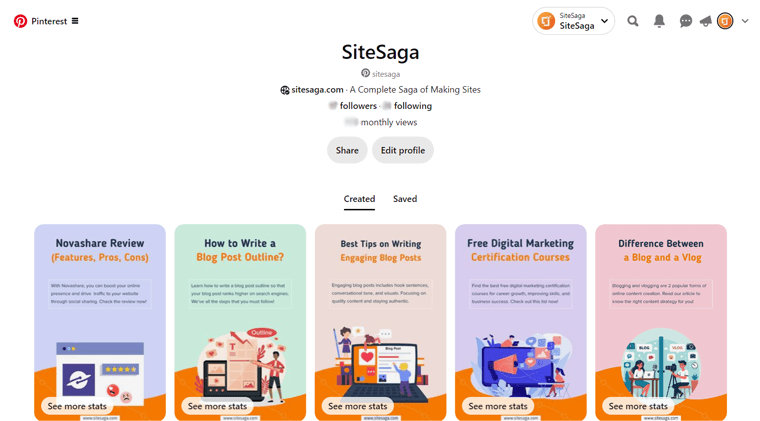
Utilize platforms like Instagram Stories, TikTok, and Pinterest to share bite-sized content that grabs attention and encourages viewers to take action.
4. Social Commerce is On the Rise
Social media platforms are increasingly integrating shopping features, allowing users to make purchases directly on the platform. This trend, known as social commerce, provides a seamless and convenient shopping experience for users.

Explore features like Facebook Shops, Instagram Shopping, etc to tap into this growing trend. And drive sales through your social media channels.
5. Personalized and Authentic Content
Social media users appreciate genuine and personalized content. So, tailor your social media posts to reflect your brand’s values, voice, and personality.

You can also portray the real people behind your business and leverage user-generated content. This helps you build trust and authenticity with your audience.
6. Social Listening and Customer Engagement
Social media is not just about sharing content; it’s also an opportunity to actively listen and engage with your audience.

Monitor social media conversations related to your brand, products, or industry using social listening tools. Respond promptly to comments, messages, and mentions to provide excellent customer service and foster meaningful relationships with your followers.
Keeping up with these current social media marketing trends will help your small business adapt and thrive in the ever-changing digital landscape. Embed these trends into your social media strategy to reach a wider audience, and achieve your marketing goals.
E) 3 Best Social Media Marketing Tools for Small Business
Now that you know how to do social media marketing for small businesses, let’s explore some of the best tools that can help you in your journey.
These are our five best social media tools for effective marketing handpicked just for you.
So, let’s go through it, shall we?
1. PostPlanner
PostPlanner is the all-in-one social media tool to increase your social media engagement with real results. Using it, you can automate and manage your publishing schedules.
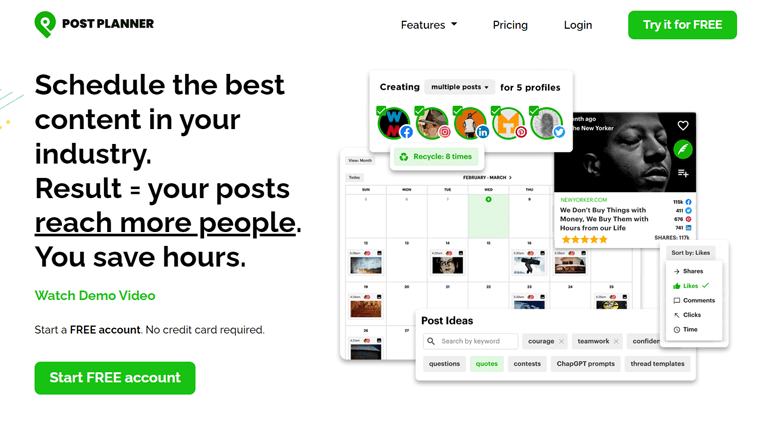
What’s more, it uses AI (Artificial Intelligence) to suggest the most viral and engaging content for your audience. And allows you to recycle, copy, shuffle, and bulk upload your posts. It also helps you monitor and manage your reviews across various platforms in one stream.
Pricing:
PostPlanner is a freemium social media tool. Using its free plan, you can connect 1 social account, schedule 15 posts, and get 50 AI credits.
For more features, you can upgrade to the premium version which starts at the cost of $23 per month.
2. Buffer
Buffer is another effective tool that helps you plan, schedule, and manage your social media posts across multiple platforms. Such as Facebook, Twitter, LinkedIn, and more.
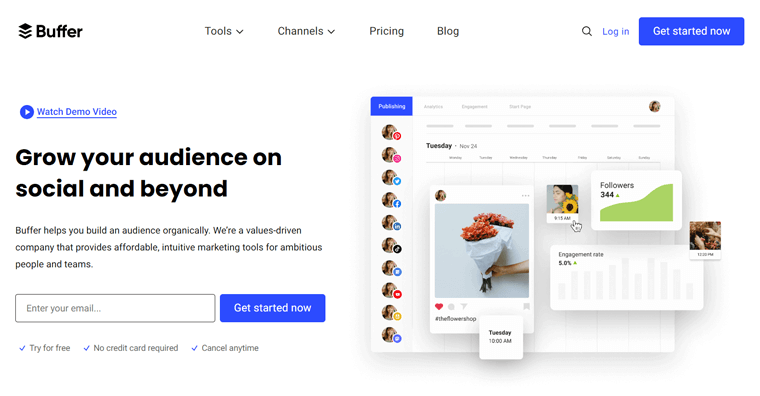
It offers a user-friendly interface, a Chrome extension, a link shortener, and custom photos and videos. It also provides analytics and reports to measure your social media performance and results.
With the Buffer AI assistant, you can generate ideas instantly and repurpose content effortlessly to boost engagement on all social platforms.
Pricing:
Buffer is also a freemium social media tool that’s available in the following schemes:
- Free: No cost. Connect up to 3 channels, planning and publishing tools, landing page builder, and AI assistant.
- Essentials: Costs $6/monthly for 1 channel. Free features plus engagement tools, and analytics reports.
- Team: Costs $12/month for 1 channel. Essential features plus unlimited team members, clients, and draft collaboration tools.
3. Sprout Social
Sprout Social is one of the powerful tools that help you manage and measure your social media marketing results. It offers a comprehensive suite of tools designed to streamline social media management for businesses of all sizes.
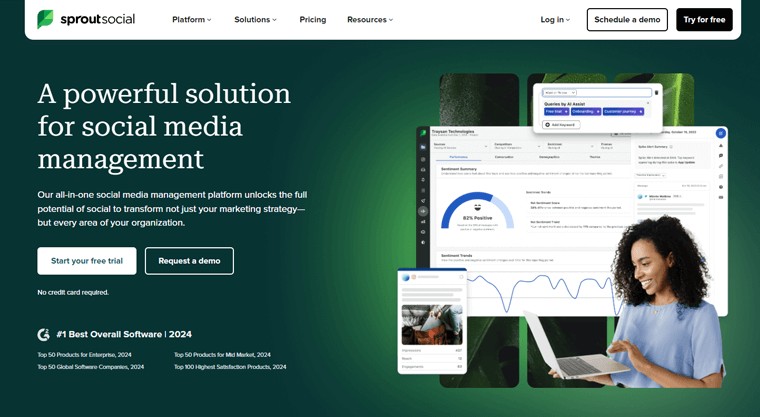
You get powerful features such as engagement, listening, analytics, and reporting features. This helps you to track and improve your social media performance and ROI. You can also collaborate with your team and integrate with your existing tools and processes for smooth social media marketing.
Pricing:
Sprout Social is a premium social media marketing tool that’s available to you at the following costs:
- Standard: $249/month. Includes 5 social profiles, an all-in-one social box, a social content calendar, review management, paid promotion tools, etc.
- Professional: $399/month. Everything of Standard plus unlimited social profiles, competitive reports, trend analysis, and a lot more.
- Advanced: $499/month. Everything of Professional plus saved replies, chatbots with automation tools, message spike alerts, etc.
You might love browsing our article on the best website builders and best SEO tools for your small business.
F) Frequently Asked Questions of Social Media Marketing for Small Business
Now, let’s answer some of the frequently asked questions related to social media marketing for small business.
Q.1: What is social media marketing, and why is it important for small businesses?
A: Social media marketing is using platforms like Facebook, Instagram, Twitter, etc to promote your business. It’s crucial for small businesses because it helps reach a wide audience, build brand awareness, and connect with potential customers inexpensively.
Q.2: How can social media marketing help my small business?
A: Social media marketing boosts brand visibility, drives website traffic, generates leads, and builds customer loyalty. It also provides insights into your audience’s preferences.
Q.3: Which social media platforms should my small business be on?
A: Choose platforms like Facebook, Instagram, Twitter, LinkedIn, or Pinterest based on your target audience’s demographics and preferences.
Q.4: How often should I post on social media?
A: Post once or twice daily on platforms like Facebook and Instagram, adjusting based on audience engagement and platform analytics.
Q.5: What type of content should I share on social media?
A: Share relevant content aligned with your brand’s messaging, including photos, videos, blog posts, infographics, and user-generated content.
Q.6: How can I measure the success of my social media marketing efforts?
A: Track metrics like reach, engagement, website traffic, leads, and conversions using social media analytics tools provided by each social media platform.
Conclusion
And that’s all folks! We’ve come to the end of our article on how to do social media marketing for small businesses.
By applying these steps, you can reach and connect with more potential customers, and increase your brand awareness, and recognition. Ultimately, you can drive more traffic to your website or store, generate more leads and sales, and enhance your authority.
If you’ve any queries or confusion, then do let us know in the comment section below. We’re happy to help you out.
We wish you all the best in your social media journey. And if you liked this article, then do share it with your friends and colleagues.
Browse our other similar articles like email marketing and digital marketing for more insights. Also, check the best digital marketing tools for business growth.
Also, follow us on Facebook and Twitter for more articles like these.
